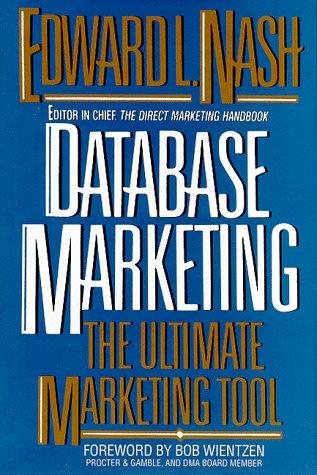Question
Need to implement a 32-bit adder, shifter and ALU in Verilog code. Test files provided at the end ______________________________________________________________ Project.v //32-bit adder //To get all
Need to implement a 32-bit adder, shifter and ALU in Verilog code. Test files provided at the end


______________________________________________________________
Project.v
//32-bit adder
//To get all scores, you cannot use arithmetic operators in this module.
module adder(input [31:0] x,
input [31:0] y,
input ci,
output reg co,
output reg [31:0] s);
//write your code here
endmodule
//32-bit shifter
//To get all scores, you cannot use shift operators in this module.
module shifter(input [31:0] x,
input [4:0] c,
input [1:0] op,
output reg [31:0] y);
//write your code here
endmodule
//32-bit ALU
//To get all scores, you cannot use arithmetic operators in this module.
module ALU(
input [31:0] a,
input [31:0] b,
input [2:0] op,
output reg [31:0] s);
//write your code here
endmodule
________________________
Adder.v (test file)
module add_tb;
reg [31:0] x_tb;
reg [31:0] y_tb;
reg ci_tb;
wire co_tb;
wire [31:0] s_tb;
adder a(x_tb, y_tb, ci_tb, co_tb, s_tb);
initial begin
$monitor("summand1 is %d, summand2 is %d, ci is %d, co is %d, s is %d", x_tb, y_tb, ci_tb, co_tb, s_tb);
//$monitor("Ouput s is %d", s_tb);
$dumpfile("add.vcd");
$dumpvars(0, a);
x_tb = 2;
y_tb = 4;
ci_tb = 0;
#10
x_tb = 3;
#10
x_tb = 4;
y_tb = 23;
#10
x_tb = 23;
y_tb = 27;
ci_tb = 1;
#10
ci_tb = 0;
x_tb = ~0;
y_tb = 1;
#10
ci_tb = 1;
end
endmodule
________________________
Shifter.v (test file)
module Shift_tb;
reg[31:0] in_tb;
reg[4:0] c_tb;
reg[1:0] op_tb;
wire[31:0] y_tb;
shifter s(in_tb, c_tb, op_tb, y_tb);
initial begin
$monitor("input is %h, shift is %d, operation is %b, y is %h", in_tb, c_tb, op_tb, y_tb);
$dumpfile("Shift.vcd");
$dumpvars(0, s);
in_tb = 'h80000001;
c_tb = 4;
op_tb = 0;
#10
op_tb = 1;
#10
op_tb = 2;
#10
op_tb = 3;
end
endmodule
________________________
ALU.v (test file) module ALU_tb;
reg [31:0] a_tb;
reg [31:0] b_tb;
reg [2:0] op_tb;
wire [31:0] s_tb;
ALU al(a_tb, b_tb, op_tb, s_tb);
initial begin
$monitor("a is %d, b is %d, op is %d, s is %h", a_tb, b_tb, op_tb, s_tb);
$dumpfile("ALU.vcd");
$dumpvars(0, al);
a_tb = 1;
b_tb = -1;
op_tb = 0;
#10
op_tb = 1;
#10
op_tb = 2;
#10
op_tb = 3;
#10
op_tb = 4;
#10
op_tb = 5;
#10
op_tb = 6;
#10
op_tb = 7;
end
endmodule
Adder nt a 32-bit adder. Input: x (32 bits), y (32 bits), ci (1 bit) Output: co (1 bit), and s (32 bits). This adder should calculate the result of x y ci, and send the result to s and also the carry to co. For example, if x = 0:00000001, y = 0xFFFFFFFF, and co = 1, then the output should be s = 0x00000001 and ci 1. Notice that you cannont use arithmetic operators (including +, -, *, /, *+, %) in Verilog in this module Shifter Implement a 32-bit shifter Input: x (32 bits), c (5 bits), and op (2 bits). Output: y. Adder nt a 32-bit adder. Input: x (32 bits), y (32 bits), ci (1 bit) Output: co (1 bit), and s (32 bits). This adder should calculate the result of x y ci, and send the result to s and also the carry to co. For example, if x = 0:00000001, y = 0xFFFFFFFF, and co = 1, then the output should be s = 0x00000001 and ci 1. Notice that you cannont use arithmetic operators (including +, -, *, /, *+, %) in Verilog in this module Shifter Implement a 32-bit shifter Input: x (32 bits), c (5 bits), and op (2 bits). Output: yStep by Step Solution
There are 3 Steps involved in it
Step: 1

Get Instant Access to Expert-Tailored Solutions
See step-by-step solutions with expert insights and AI powered tools for academic success
Step: 2

Step: 3

Ace Your Homework with AI
Get the answers you need in no time with our AI-driven, step-by-step assistance
Get Started


